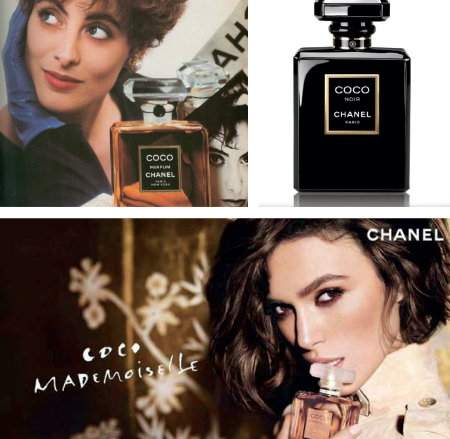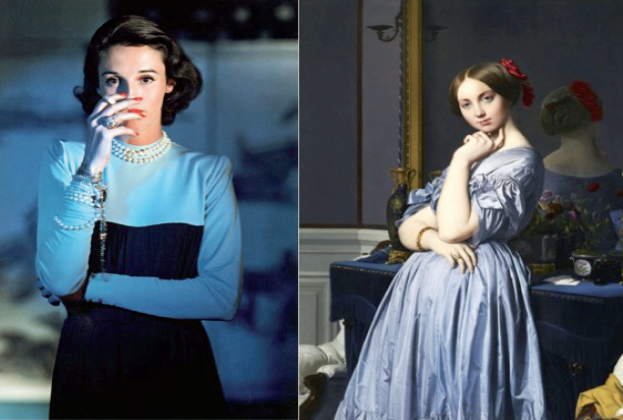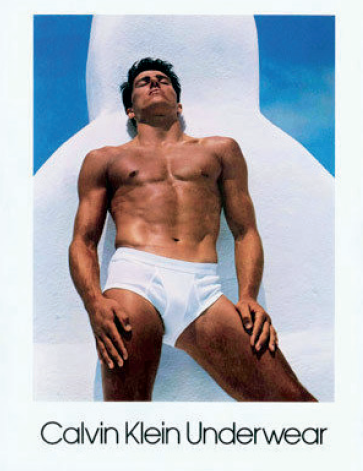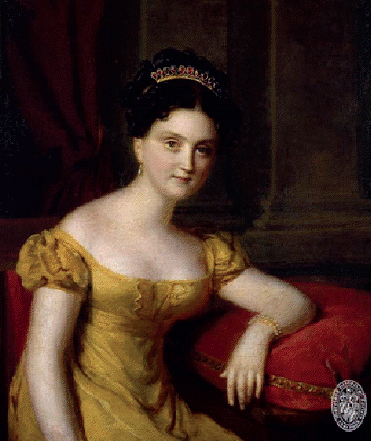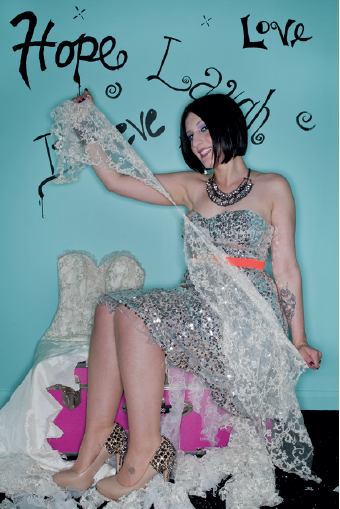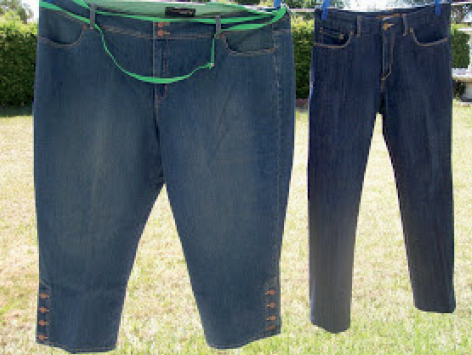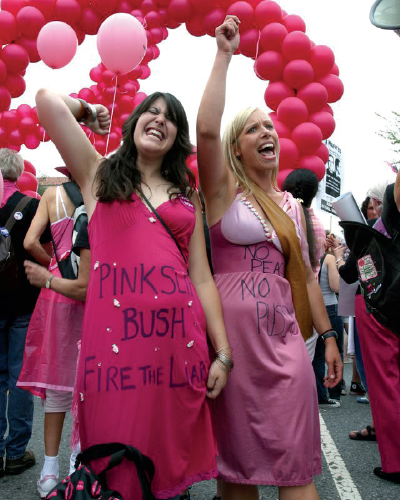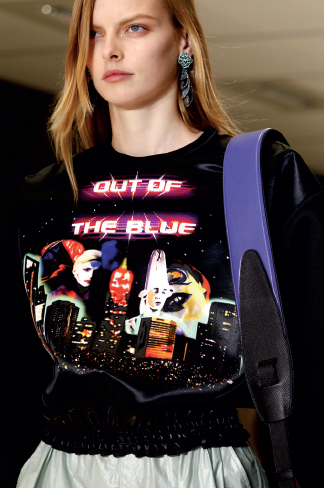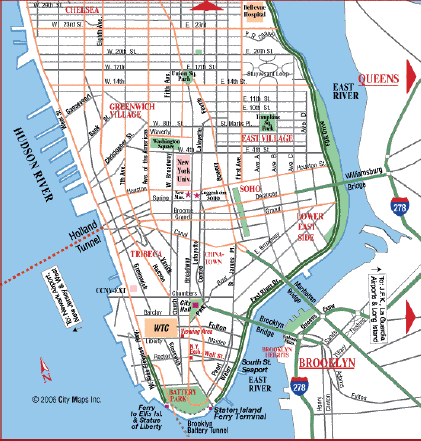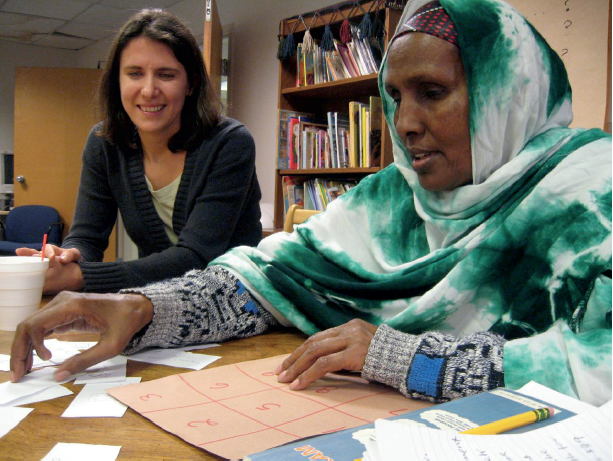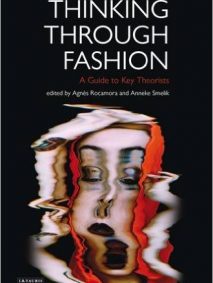Fashion Studies
Parsons School of Design's MA Fashion Studies
Parsons MA Fashion Studies Class of 2013 Thesis Abstracts
We have complied the MAFS Class of 2013’s thesis abstracts in an effort to highlight the diverse and limitless possibilities in the growing field of Fashion Studies.
GISELA AGUILAR
Veronica Gisela Aguilar graduated with honors from Loyola Marymount University in Los Angeles in 2007 where she studied Graphic Design and minored in Communication Studies. Her work within the MA Fashion Studies program explores her interests in fashion publications, new media, and visual and material culture. Her MA thesis examines the evolving relationship between print media and digital media and their distinct modes of fashion mediation and consumption.
THESIS TITLE & ABSTRACT:
The New Landscape of Fashion Media: How The Gentlewoman Repositions Print Publications in a Digital Culture
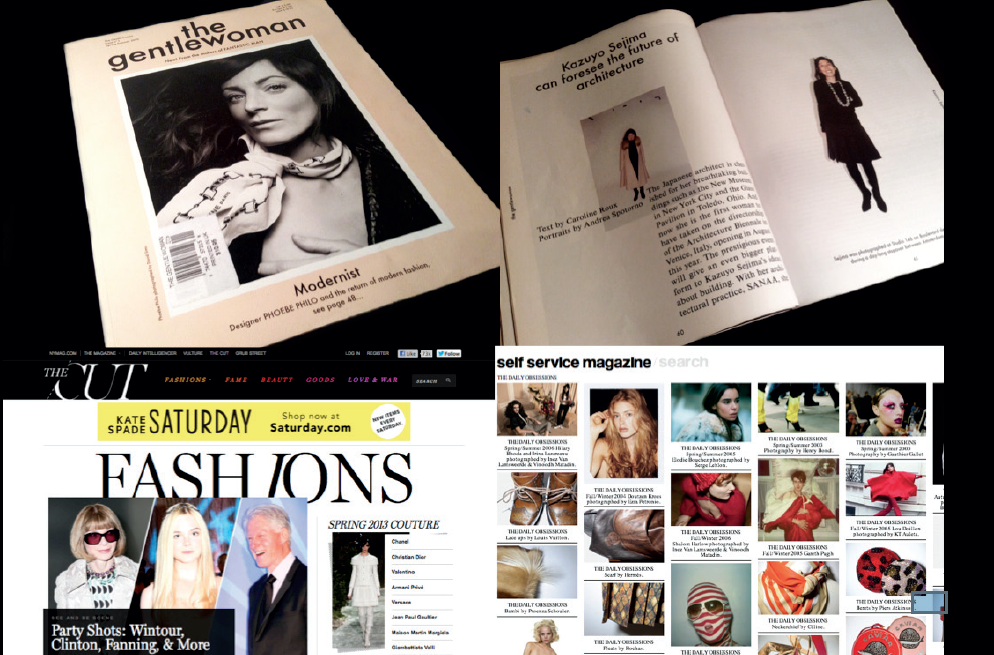 With the emergence of new media technologies, the contemporary fashion consumer now has an overwhelming selection of sources from which to obtain fashion-related news, from magazines (both print and digital), fashion blogs, to social networking sites, and image-sharing portals. Thus, never before has the public had such instantaneous and uninterrupted access to fashion in all its forms. Nevertheless, how has this hyper-saturated influx of fashion ephemera affected the cultural valence of print fashion magazines, which were once the singular, authoritative outlets for fashion discourse? Since the start of the millennium, a new breed of niche fashion magazines has emerged in direct response against the hurried, homogenized, and half-digested content that is disseminated by mass market fashion magazines and online channels.
With the emergence of new media technologies, the contemporary fashion consumer now has an overwhelming selection of sources from which to obtain fashion-related news, from magazines (both print and digital), fashion blogs, to social networking sites, and image-sharing portals. Thus, never before has the public had such instantaneous and uninterrupted access to fashion in all its forms. Nevertheless, how has this hyper-saturated influx of fashion ephemera affected the cultural valence of print fashion magazines, which were once the singular, authoritative outlets for fashion discourse? Since the start of the millennium, a new breed of niche fashion magazines has emerged in direct response against the hurried, homogenized, and half-digested content that is disseminated by mass market fashion magazines and online channels.
Considering that fashion enthusiasts fluidly consume both print and digital media, it is no longer adequate to embark in the analysis of contemporary magazines without contextualizing them in the greater digital culture in which they now exist. In this thesis I attempt to carry out a comparative study of the biannual niche style magazine The Gentlewoman and various fashion websites to unpack their modes of consumption and production of fashion discourse. Through this investigation, I aim to deconstruct their visual and written narratives to extricate how these seemingly disparate mediums produce new values, experiences, and languages that mediate fashion. Though I acknowledge that we are in the midst of a digital transformation that will continue to progress after this project is complete, my intention is to expose the symbiotic relationship between print and digital media as a fertile topic worthy of critical examination within the field of fashion studies and beyond.
—————————————————————————————————————————————————————
KATHLEEN BRADLEY
Katie Bradley graduated from the University of California, Santa Cruz with a dual BA in The History of Art & Visual Culture and Film & Digital Media in 2010. Her work in the MA Fashion Studies program focuses around the intersections of fashion, fame, and consumption in popular culture, and her thesis work explores the role of celebrities as fashion designers.
THESIS TITLE & ABSTRACT:
$ELLEBRITY: A Consideration of the Celebrity as Purveyor of Design in the Fashion World
The past decade of fashion has been marked by the introduction of the celebrity fashion designer, a result of a newly appropriate blending of industries as well as newfound access to the everyday happenings of celebrity figures through popular media outlets. In response to today’s increasingly fast-paced cycle of fashion, more celebrities are launching their own labels and quickly changing the ways people consume fashion. This influx of celebrity designers has profoundly stimulated an awareness of fashion within the everyday while allowing celebrities to commodify their image into a profitable product. In order to reveal how and why the celebrity designer has altered the fashion world, their presence in mainstream media and popular fashion is analyzed in this project to form a better understanding of their successes, failures, and steps made to achieve such prominence. This project analyzes the ways in which the presence of the celebrity designer has influenced consumption practices, methods of social surveillance, and created new forms of capitalism based on image branding by performing case studies on individual celebrity designers and utilizing archival research. By searching the extensive archives of Time Inc. in New York City, the emergence of the celebrity designer and the changing dialogue surrounding their presence is revealed. Using the archive’s electronic database, an exhaustive study of the celebrity in fashion is exposed and chronologically quantified to present a proper analysis of this new class of designer as it relates to contemporary fashion. Interviews with experts in the fashion industry help to better outline the shifts made by celebrities and how they are effectively carving out a new niche within the pre-established divisions of fashion and class. Merging the desire of a label with the desire for another person, celebrity fashion designers are turning contemporary fashion not only into a process of desiring things, but one of desiring people.
—————————————————————————————————————————————————————
CALLY CARBONE
Cally Carbone graduated from Stephens College with a degree in Fashion Marketing and Management. After a few years working in the fashion industry, Cally entered the MA Fashion Studies program to explore the role of fashion brands on personal identity, particularly through the scope of licensed products.
THESIS TITLE & ABSTRACT:
L’eau de Fashion: Fragrance as an Experience of Fashion through the Use of COCO Chanel Parfums
Fragrance is as intimate as a piece of clothing, if not more. It is the invisible accessory. The wearer applies it to their body as a form of adornment. Because fragrance enacts a specific bodily sense, its meaning is even more than just to freshen body odor. Fragrance becomes an olfactory experience; stimulating feelings, memories, and can even become part of a personal identity. The initial appeal of a perfume can be due to a number of reasons, such as designer name and prestige, an immediate response to the scent, or bottle design. However, once time is spent wearing the fragrance, the chosen perfume no longer is the designer’s, but that of the wearer’s. Fragrance creates a bodily experience through the essence of fashion, a sensuous enhancement to one’s fashion wardrobe.
The intent of this research is to explore the relationship between fashion and fragrance; more specifically how and why the fashion industry turned perfume into a branded accessory and the aspirational experience it yields. In other words how fashion took on scent, an intangible, and reshaped the way it is developed, packaged and sold to consumers. Historical research of industry pioneers and analysis of fashion branded fragrances starting in the 1970s shows the important role fragrance plays in keeping the fashion industry monetarily stable and explains how perfume becomes an entry point for consumer brand adoption. By analyzing Chanel COCO fragrances I illustrate the process the brand takes to assimilate fashion into fragrance through aspirational influences.
—————————————————————————————————————————————————————
REBECCA CRAWFORD
Rebecca grew up in Sydney, Australia. After graduating from the University of NSW with a Bachelor of Architecture in 2010, she decided to move to New York City and further her education through the realm of ‘fashion’. Becca was (and continues to be) fascinated by how fashion, architecture and space are so profoundly interconnected in how we cultivate and understand our sense of ‘self ’…
THESIS TITLE & ABSTRACT:
Terminal Perfection: Cultivating Self Through Dress, Design & Decoration
Bill and Babe Paley were the defining cultural narrative of America during the mid twentieth century. Set within a period of transformation for the mass media and visual representation at large, this couple was the most visually illustrious embodiment of the shift in social power from aristocratic, noble birth, to the newly developing ‘jet-set’, executive lifestyle. Based on this shift in cosmopolitan ideal and its resulting re-imagined use of mass media, architecture, fashion and the decorative, this paper investigates the relationship between our inner ‘self ’ and the physical, spatial and assorted aesthetic constituents of one’s surrounding environment. By critically analyzing the legacy of perfection that Babe has left behind, we are able to more deeply consider the degree she was supposedly ‘trapped’ both within the ‘eye’ of the media and by her relationship with Bill.
The enduring power of Babe’s image raises the question of what it means to live a ‘decorated life? Where decoration, in the world of picturesque American socialites, supposedly concealed the pain behind the glamour. Henry James’s theory of consciousness, as articulated in novels such as The Portrait of a Lady, The Golden Bowl and The Spoils of Poynton, is used as a moral framework to consider whether Babe was presenting her true self to the world, or constructing an artificial or superficial identity. Further, the calculated way in which she cultivated her own ‘mythology’ as a contemporary embodiment of historically powerful female figures adds a subversive element to the fashioning of her image. Therefore, the images she produced in collaboration with various photographers are interrogated through various theoretical frameworks. Some of these include James’ notion of the divided self, film noir cinematic theory, Baudelaire’s theory of the ‘beautiful amidst the horrible’ and analysis into artists including Ingres and his ‘grotesquely beautiful’ forms.
Ultimately, it is asserted that Babe’s image and her pursuit of beautiful things, despite often seeming vulgar and materialistic, is what allowed her to authentically connect with both her ‘self ’ and the universe. However, with such a supremely beautiful life, inevitably come elements of destructive darkness. Despite the fact that “the human soul can incorporate art and remain not only human, but perhaps be further humanized in the process”[1] ‘a decorated life’ both liberates an individual’s soul and sense of self, whilst trapping them in a terminal pursuit of perfection.
[1] Mary S. Schriber, “Isabel Archer and Victorial Manners.” Studies in the Novel (University of North Texas) 8, no. 4 (1976): 450.
—————————————————————————————————————————————————————
ROBERTO FILIPPELLO
Roberto Filippello graduated magna cum laude from the faculty of Letters and Philosophy of University of Rome. Upon graduation, he gained experience in Milan’s fashion industry working as a fashion writer and then moved to New York to join the MA Fashion Studies program at Parsons. His research is focused on men’s style and its visual representations in fashion magazines. He wrote essays on Bruce Weber’s ad campaigns for Gianni Versace, Medieval nuns’ religious clothing, queer style in the New York LGBT night scene, and the Sicilian Baroque in Dolce & Gabbana’s aesthetic heritage. He currently works at Vogue and next Fall will be teaching an advanced course titled “Visionaries: Stylists and Photographers of the 20th Century.”
THESIS TITLE & ABSTRACT:
The New Man: Fashion, Bodybuilding, and AIDS in the 1980s
Images of hypermasculinity first started appearing in fitness magazines in the early twentieth century and by the 1930s in fashion photography. However, it was only in the 1980s, thanks to the impact of Bruce Weber’s photographs, that images of hypermasculinity became widespread. This trend was epitomized by the hypermasculine male models that Gianni Versace sent down the runway and had photographed by Bruce Weber himself. Thus, in the late 1980s, what can be considered a new aesthetic phenomenon arose in Western society: young men started to develop hypermuscular bodies, meanwhile cultivating a new idea of masculinity. Masculinity became associated with muscularity and butch dressing, which were both being marketed by fashion companies through advertising campaigns that blatantly sexualized and objectified the male body. The image of this New Man was being fabricated by fashion advertisements and by the gay city nightlife. Indeed, it arose as a result of different factors: the incorporation by the LGBT community of specific items of clothing traditionally associated with virility, i.e. with heteronormative masculinity; the diffusion of bodybuilding, especially within the gay community, mostly as a reaction to the fear of the AIDS epidemic; and, finally, the spread of AIDS itself, which pushed men to take care of their body through both intense fitness workouts and clothing consumption, in order to exorcize the fear of the disease as well as to metaphorically hide it through forms of self-decoration. This web of factors poses the question of how healthy the male body from the late 1980s onwards really was. To address this issue, another element related to the emergence of bodybuilding as part of a commonly shared lifestyle seems to be relevant: the use of anabolic steroids, which in order to help shape a fit body, poisoned the body itself. The idea of health, hence, gradually lost any medical connotation and entered the realm of beauty, which became constructed independently from the traditional notion of health. This ubermasculinity, although by now widespread in the heterosexual community, is an inherently queer social construction, not only as it took form within the gay community, but also because it began a camp performance that while creating a parody of straight masculinity, also resists and displaces common assumptions on masculinity itself.
—————————————————————————————————————————————————————
KELSEY GLEIN
Kelsey Glein graduated from Pepperdine University with a BA in Political Science and Sociology. She interned for U.S. Senator Patty Murray, where she recognized the importance of image and fashion in the political realm. This led her to pursue graduate studies in fashion where she could merge her passion for politics and fashion. As an MA Fashion Studies student she has enjoyed internships with Diane von Furstenberg, Vogue, and Harper’s Bazaar. She is most captivated by the connection between fashion, gender, and power.
THESIS TITLE & ABSTRACT:
The November Issue: The Role of Fashion and Politics in the 2012 Presidential Election
In today’s media-run culture that is highly focused on the visual, the fashion system and the political system each exist as both substantive and superficial entities. Each of these systems subsists independently of one another, and this thesis will argue that the fashion system and the political system overlap in several significant ways. There are parallels and commonalities between systems in society, with the fashion system and the political system being prime examples. Both fashion and politics represent a merging of the public and private selves, and combine the artificial with the real. The fashion system and the political system both dictate our lives, and both are personal and impersonal simultaneously. This research paper proposes that the fashion system overlaps with the political system in the United States of America, and that in the 2012 Presidential Election fashion inserted itself into the political system both aggressively and passively. The media played a significant role in this insertion, incessantly endorsing the link between fashion and politics and revealing the nature of systems as a means of conveying and identifying fashion. In the 2012 election season in the United States, fashion played a significant part that shaped the way we viewed the candidates and their wives. This thesis puts forward that the fashion system and the political system in the United States of America are similar and overlapping, and uses key points of collision as an illustration of these ideas. Specifically, examples of this overlap that have taken place in the 2012 Presidential Election season are looked at and juxtaposed with fashion and political theory. Case studies used to illustrate fashion’s involvement and influence in politics include the fundraising efforts of Vogue Editor-in-Chief Anna Wintour and Council of Fashion Designers of America President Diane von Furstenberg for the reelection of President Barack Obama, and the focus of the media on the physical appearance and fashion choices of political wives and First Lady Michelle Obama on the campaign trail as well as the deliberate fashion selections of these women. Overall, this thesis will create a better understanding of the insertion of fashion into the present political system in the United States, specifically in the most recent election season, and will allow for a deeper knowledge of the way fashion and politics as social structures impact society and our identity.
—————————————————————————————————————————————————————
ANN JACOBY
Ann Jacoby graduated with honors from the University of Delaware where she received her BS in Fashion Merchandising. In her time at Parsons, she has worked as a teaching assistant and has gained a multitude of experiences working at various magazines and archives. Her MAFS thesis focuses on fashion and politics in the early American nation, particularly the way in which women’s roles and dress practices cultivated an early national identity for the burgeoning republic of America.
THESIS TITLE & ABSTRACT:
Pledging Allegiance: Defining the American Image through the Politics of Dressing in the Early Republic
Following the United States’ victory in their fight for independence, the American people would use their newfound freedom from a monarchial society to forge a culture based upon the virtuous and egalitarian tenets of republicanism. To visually establish such an identity for their nation, the population relied heavily on dress as its materiality and visibility made it one of the most evident badges of one’s loyalty to the American cause. Turning to the homemade production of fabric and renouncing objects that evoked the alluring yet threatening European charms of luxury and regality, America defined their national identity through an aesthetic that boasted a conservative and sensible refinement. By closely reading the life and style of American celebrity, Elizabeth Patterson Bonaparte, noting her scandalous and unpatriotic display of dress, one understands the importance placed on citizens’ appearances and the meanings specifically attached to dress in the vulnerable environment of the early American republic. Elizabeth flaunted her French fashions (a body-baring version of the neoclassical style) and opulent jewels throughout American society and was highly criticized as the ideologies behind such a style were incongruent with the American cause of democracy. Analyzed against other female figures from the early nineteenth century, Elizabeth is likened to liberal Parisian social figures like Juliette Récamier and Empress Josephine and contrasted by American representations of ideal republican motherhood. The conflicting nature of her American citizenship and European appearance reflected poorly upon the image of the nation and explains larger issues of how fashion informs national identity. Studying the body politic and the post-American Revolution shift from the royal embodiment of the state by a sovereign king to embodiment by the democratic commonwealth of citizens, we see that women like Elizabeth (upper class, visible bodies) had the unsettling power to taint the representative form of the body politic through fashion. Drawing upon readings which connect the body, dress practices, and political communication, this research defines fashion and its political importance in the formative time and space of the early American nation.
—————————————————————————————————————————————————————
KIMBERLY JENKINS
Kim Jenkins holds a Bachelor of Arts degree in Anthropology and Art History, which has informed her interests in how fashion materializes one’s identity and navigates adversity. Kim enjoys practicing her research in fashion studies through exhibition curation, editorial work, film and public speaking throughout New York City.
THESIS TITLE & ABSTRACT:
“That Was My Veil”: Sartorial and Cosmetic Constructions of Resilience in Divorced Women
Through a close look at personal stories, media representation and learned sociocultural norms, it is presumable that social conditions have existed over time that have made the re-construction of a divorced woman’s appearance obligatory to encouraging a sense of resilience. Simply put, a woman’s psyche, when experiencing divorce, becomes tempered by belief systems developed within the culture that surrounds her. Consequently, this cultural agitation plays a key role in producing the dichotomous effect of how a woman presents herself publicly to society whilst managing her emotions privately in the wake of a divorce. Offering ground-breaking research in the field of fashion studies, this paper narrows its focus on how a woman’s sartorial and cosmetic practices become significantly influenced through negotiating the management of her physical appearance and identity both during and following the process of a divorce. Engaging an ethnographic approach through interviews with divorced women, as well as a critical analysis of media representation, I will show how the sartorial and cosmetic practices of the divorced woman can explain how we cope with adversity through the transformation of our appearance, and how psychology and social expectations can directly influence our everyday dress practices more than we acknowledge.
—————————————————————————————————————————————————————
KAITLIN KENNEDY-GLOBENSKY
Kaitlin Kennedy – Globensky graduated from Manhattanville College with her BA in communications and broadcast studies, double minoring in film and history. Kaitlin’s academic inspiration stems from twentieth century Hollywood and the cultural effects of cinematic costume design.
THESIS TITLE & ABSTRACT:
Platinum Glamour: Jean Harlow, Fashion & Cinematic Escape
Using Jean Harlow’s styling as a lens, this thesis explores how (and why) fashion and pre-code Hollywood cinema coalesce to utilize glamour as a carefully crafted vehicle of escapism for society during the Great Depression. Understanding cinema fashion as a product of its time, this thesis examines how the stylization of Jean Harlow’s screen image and costuming relates to broader societal shifts in the production and definition of glamour from the liberated social setting of the 1920’s into the more reformed, morality- driven setting of 1930’s America as embodied by the Motion Picture Production Code.
During her short career, Harlow connected the glamorous world of film fashion with the massconsumer retail market. She is explicitly tied to the fabric satin, and is continually referred to in relation to that glamorous material throughout media representations. Harlow’s star image establishes her as the “white-ideal” blonde-bombshell which cinema embraces through the years of the Motion Picture Production Code. She was one of the few stars able to transition not only from silent cinema to sound, but also from pre-Code to post-Code– which proved detrimental to the careers of many other stars. Finally, this thesis discusses the importance of Harlow’s whiteness and blondeness in the construction of her image. A specific focus is the vital influence of costume and the costumer in both cinema and cultural fashions. The work of M-G-M’s famed costume designer Gilbert Adrian, exemplifies the successful transition of glamour from the movie screen into the American fashion system, proving that cinema costume is a product of society and a direct reflection of its time.
Cinema adaptations of glamour created by filmmakers of the 1920’s and 1930’s provided a visual mise-en-scene that supplied moviegoers with a more optimistic view of the workings of society. Harlow is a key figure of this cinema system whose star image was able to perpetrate glamour as a form of escapism for Americans through some of the darkest times of the Great Depression. Her fashionable and fashioned image still represents a modern, societally understood example of glamorous style and American beauty, illustrating that even with the drastic shift in her image in conforming to the more highly regulated Motion Picture Code, her glamorous pre-code star image has had the power to prevail by continuing to influence contemporary cinematic fashion.
—————————————————————————————————————————————————————
LAURA JANE KENNY
With a background in research, writing and sociology, Laura Jane Kenny’s deep curiosity in fashion, its evolutions and its implications, has found a home in the fashion studies field. With a background in journalism, Laura Jane’s skills coincide with her research interest which include sociology, gender theory, material culture, urban and inner-city culture and how all of these things interact with fashion. Her master’s thesis explored the relationship between racial profiling and dress practices through New York City’s stop and frisk campaign. After graduating from the MA Fashion Studies program, Laura Jane hopes to work in the fashion journalism and curation field before ultimately pursuing her Ph.D. in order to conduct further research and teach. Hailing from Colorado, Laura Jane Kenny is proud to now call Brooklyn her home.
THESIS TITLE & ABSTRACT:
Criminalizing Dress: Exploring the Intersections of Dress Practices and Racial Profiling through New York City’s Stop and Frisk Campaign
New York City is home to some harsh fashion critics. While one’s clothing choices are often scrutinized in such a fashion-focused city, unique consequences emerge from the inspecting gaze of the New York City police. The examination of individual’s dress practices in New York City’s stop and frisk campaign, a policy which encourages New York City police officers to stop anyone they deem “suspicious,” gives new meaning to the term fashion victim. When police look to visual cues to decipher possible level of suspicion, dress practices becomes a crucial part of the conversation. The use of this new policy suggests that the importance of one’s appearance is rapidly increasing with more serious consequences than ever. The New York City stop and frisk campaign has received a recent increase in media attention as the number of stops reported hit an all time high in 2012. The campaign has been accused of racial profiling as reports showed nearly 85 percent of those stopped in New York City were Black or Hispanic. A number of issues are at play in the stop and frisk campaign and their relationship to dress practices begs exploration. The urban landscape, embodied identity, and the power of viewing and surveillance are just a few of the ideas that are examined. Utilizing interviews of those who have been stopped and frisked, collected and published by the Center for Constitutional Rights, this thesis highlights trends in the relationship between clothing and racial profiling. The theoretical framework of fashion studies alongside theories surrounding the gaze and surveillance aids in our understanding of the invasive impact of stop and frisk seen both in the adapted dress practices of those stopped as well as in their constructed identity. This thesis seeks to gain further understanding of how one’s personal dress practices are affected by the threat of looking “suspicious” and explores the impact of “dressing innocently.”
—————————————————————————————————————————————————————
RACHEL KINNARD
Rachel Kinnard graduated from Parsons The New School for Design in 2008 with a BA in Fashion Design. Rachel’s research interests explore the boundaries between fashion and body, specifically within technology and medicine. Her MA thesis considers how the experience of dressing through bras and clothing can anticipate the decision to undergo a breast reduction or breast augmentation procedure.
THESIS TITLE & ABSTRACT:
From Silk to Silicone: Considering Bras, Breasts, and Cosmetic Surgery
In the twenty-first century, the distinction between dress and body is increasingly becoming more indistinguishable. A thorough analysis of the relationship between dress and cosmetic surgery is vital to the field of fashion studies. In western histories of dress, considerations of cosmetic surgery are typically found as a concluding chapter, presented to the reader as a commodity of post modernity and the future of body shaping. This thesis is an analysis of cosmetic surgery through the perspective of fashion studies in which I ask: what is the relationship between temporarily shaping the body through clothing and permanently shaping the body through cosmetic surgery? If bodies undergo cosmetic surgery procedures as a response to the experience of wearing fashionable clothing, can cosmetic surgery then be understood as a permanent form of dress?
Focusing solely on cosmetic procedures of breast for this case study, I explore how the experience of dressing through bras and clothing can anticipate the decision to undergo a breast reduction or breast augmentation procedure. My analysis includes interviews with three women, currently in their twenties, who underwent either a breast reduction or breast augmentation operation when they were between the ages of sixteen to twenty years of age. Through these interviews, I situate clothing as agent of influence on an individual’s self-perception of their own body. In doing so, I argue that cosmetic surgery creates bodies that mirror the practices of dress. This thesis aims to demonstrate how our second skins, our undergarments and our clothing, are instrumental in fashioning our primary skin, our bodies.
—————————————————————————————————————————————————————
JENNIFER McDONOUGH
Jennifer McDonough is from West Chester, Pennsylvania and received her B.A. from Columbia College Chicago in Arts, Entertainment, and Media Management in 2008. Her interests in fashion range from museology and historical studies, to subcultural studies and the role that garments hold in subcultures.
THESIS TITLE & ABSTRACT:
Slenderizing Excess: Exploring Weight Loss through Dress Practices
Watching television we are bombarded with advertisements for weight loss companies that show a photograph of an overweight woman wearing drab clothing placed next to an image of her after she has participated in their program, in which she is smiling and stylishly dressed. The obesity epidemic that is plaguing much of the Western world has led to a large amount of women spending years in an obese body before losing a substantial amount of weight. While many researchers have looked at the style practices of “plus-size” women, there is little research on the style practices of women after they have lost a large amount of weight.
The purpose of this thesis is to examine the obstacles that an increasing number of women face in reconstructing a wardrobe after losing weight, particularly those women who have lost over one hundred pounds. This research will question the effects of losing a large amount of weight on a woman’s wardrobe and dress practices. Issues that will be addressed include changing attitudes toward body image, the anxiety, or freedom shopping for a smaller body, learning how to dress a “new” body, and learning how to express identity through clothing.
—————————————————————————————————————————————————————
DEVON NOVOTNAK
Devon Novotnak graduated from Swarthmore College in 2011 with a degree in Sociology/Anthropology as well as Peace and Conflict Studies. Fresh from academia, Devon entered the MA Fashion Studies program to expand her research. This opportunity and approach to fashion will be used as she enters the industry working within buying and product development.
THESIS TITLE & ABSTRACT:
“Dressing in Pink and Making a Ruckus”: Dress Practices of the Feminist, Anti-War Group Codepink
Fashion studies has not specifically looked at the use of dress by women in the context of protest. This research attempts to fill this void by using a specific protest group as a point of mediation in the examination of dress. The feminist anti-war group Codepink is used as a case study to examine the relationship of dress to protest, specifically as used by women. As a group working towards nonviolence in protest in the United States in the beginning of the twenty-first century, Codepink uses dress as a tool for women to bring shock, draw attention, and create a space for dialogue and power in protest. Their protests push the boundaries in the way in which dress has been used in the context of protests. Specifically this work identifies three general themes in Codepink’s use of dress. The first is the way in which traditional gender roles have been used and subverted by a predominantly woman’s organization. This becomes evident in the examples of the general use of the color pink, the Stolen Beauty campaign, and the protests of Guantanamo bay. The second theme identified is the representation of the body, particularly the female body by Codepink. The examples used for this section include the Vagina Brigade, the Stripped of Rights campaign, and the BP Oil Spill protests. The last theme examined in this research is the use of lingerie in protest as an intersection between public and private. This is evident in the act of pink slipping and the Bust up Bank of America protests. By examining these themes this research will provide a thorough analysis of the relationship of protest and dress as demonstrated through the use of femininity and the female body by Codepink.
—————————————————————————————————————————————————————
MEAGAN PROCTOR
Meagan Proctor obtained her BA in English from Belmont University and her MA in Fashion Studies from Parsons The New School for Design. Her research largely focuses on the points of intersection between highbrow and lowbrow cultures, and her thesis draws upon fashion studies, gender studies, and science fiction studies to explore the role of dress practices in deconstructing gender and sexual identities in science fiction literature.
THESIS TITLE & ABSTRACT:
(Ad)Dressing the Other: Deconstructing Depictions of Otherness through Clothing in Science Fiction Literature
Ray Bradbury once said, “Science fiction is the most important literature in the history of the world because it’s the history of ideas, the history of our civilization birthing itself.” This thesis examines the work of two science fiction authors, Ursula K. Le Guin and Margaret Atwood, as they deconstruct gender and sexual identities within alternate societies, recording the events of their own times as they postulate about the future, and the role that fashion plays within these dialogues. Le Guin refers to her writing, and science fiction in general, as “thought experiments,” and this thesis is a sort of thought experiment in itself, as I have used a combination of perspectives from fashion, gender, literary, and science fiction theory in order to explore the ways fashion can be used as a tool for unpacking issues of gender and sexuality, and particularly in deconstructing depictions of “otherness,” in the work of Le Guin and Atwood. What these two authors have in common is that they both use clothing to champion the feminist cause through depictions of otherness, mirroring their own experiences as others as females working within a predominately male genre. By thinking of fashion, gender, and science fiction as codes, or systems of signs, were are able to consider their ability to designate insiders and outsiders and to create these feelings of otherness. My hope is that this thesis will serve as a foundation for further research into the ways these fields intersect and create new meanings for one another.
—————————————————————————————————————————————————————
MOLLY ROTTMAN
Molly graduated from Grinnell College with a BA in Anthropology and a concentration in Gender, Women’s, and Sexuality Studies. She is interested in how fashion intersects with sexual and gender identities, mainly in LGBTQ communities. Molly’s MA thesis allows her to combine gender studies and queer theory with fashion studies.
THESIS TITLE & ABSTRACT:
From American Apparel to Prada: An Investigation of Growing Economic Disparities, Luxury Fashion, and the Formation of Gay Identities in New York City
Scholar Amber Hollibaugh writes that, “If you listen to the current telling of ‘our’ queer tale, people like me would seem an anomaly. Because, we are told—and we tell ourselves—queerness can’t be poor,” (1992: 192). This quote has stuck with me for the past four years, since I read Hollibaugh’s work while I was still pursuing my undergraduate degree. It wasn’t until last fall, however, when I interviewed a young, self-identified gay man who had been living in New York City for just over a year, that I realized how easily someone could feel priced out of being gay. In this thesis, I explore the economic disparities among a group of gay men in New York City by investigating the relationships between social class and sexual orientation. In addition, I investigate how social class impacts the dress and fashion practices of a number of gay men. However, while New York City represents myriad gay cultures, subgroups and communities, my research pertains to gay men in Chelsea (a predominately white area) and its surrounding downtown neighborhoods, such as Greenwich Village and the Meatpacking District.
The foundation of this thesis depends on two different types of research. First, it is necessary to utilize both fashion theorists such as Joanne Entwistle as well as queer theorists and anthropologists who have conducted case studies about queer consumption, gay dress and class issues/social inequality. I rely heavily on both Judith Butler and Shaun Cole’s highly respected works (Gender Trouble by Butler and Don We Now Our Gay Apparel by Cole), which establish a definition of “gay” for the purpose of my thesis. This definition is an essential framework for my thesis as most scholars, especially the fashion scholars who I’ll be engaging with, utilize Butler’s definitions for their own research as well. This allows for consistency throughout my own work and the other disciplines that I’m engaging with. Second, I have conducted interviews with a number of subjects (five men) about sexuality, identity and socioeconomic status in order to better understand gay fashion and culture in New York City. The aim of this thesis is twofold: first, to debunk stereotypes many people have regarding gay men in New York City; second, to build on the already abundant field of fashion studies, corroborating the discipline as a highly academic area of study.
—————————————————————————————————————————————————————
MINNA SHIM
Minna Shim is from Salt Lake City and majored in International Studies at the University of Utah. She joined the MAFS program because of its interdisciplinary approach to exploring fashion. Although interested in a variety of topics, her affinity for international relations and its impact on fashion proves to be the strongest. Her thesis investigates the role of dress for migrated entities.
THESIS TITLE & ABSTRACT:
Coming Home: The Role of Dress for Refugees in Resettlement
By the end of 2010, The Office of the United Nations High Commissioner for Refugees (UNHCR) estimated that 33.9 million refugees were in existence worldwide—displaced internally and externally. Old conflicts are continuing to escalate, new conflicts are emerging, and help is too slow to alleviate the numbers of these displaced entities. The forced removal from one’s home because of a life-threatening conflict is not a new phenomenon. Our histories and current affairs are plagued with similar accounts of forced migrations. While it is crucial for refugees to escape life-threatening environments, what happens after in their displacement and resettlement also has a powerful impact on their futures. If refugees are granted resettlement, it’s the beginning of a new life. Not only must refugees become accustomed to a new lifestyle and culture, but also preserve and recreate the self as well. My research explores the sartorial navigation through new cultural and social contexts and how individuals of migration consciously and unconsciously redevelop forms of habitus with dress. Specifically, it examines the role of dress for refugees in resettlement, the mediation of past, present, and future experiences enabled by renewed dress practices, and the amplification of dress’ value in circumstances of migration. This thesis argues that during the resettlement process for refugees, dress affects the physical, facilitates one’s belonging and rejection of micro and macro social spheres, and acts as an instrument for reclaiming agency and a mode of self-preservation. Situating itself as a juxtaposition for the field of fashion studies and body of literature regarding refugee resettlement, this thesis attempts to highlight the importance of migrated bodies—forced and otherwise—in the discourse of fashion studies, as well as the need to investigate the effects of cultural and social transitions on the once normative dress practices of individuals experiencing displacement, migration, and resettlement.

